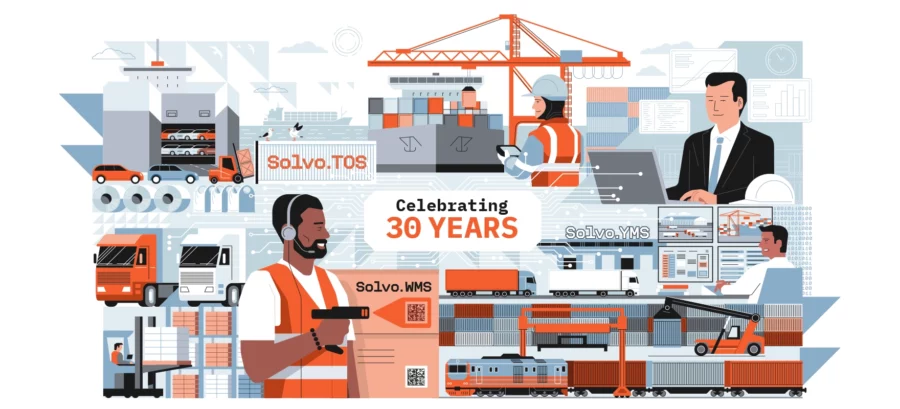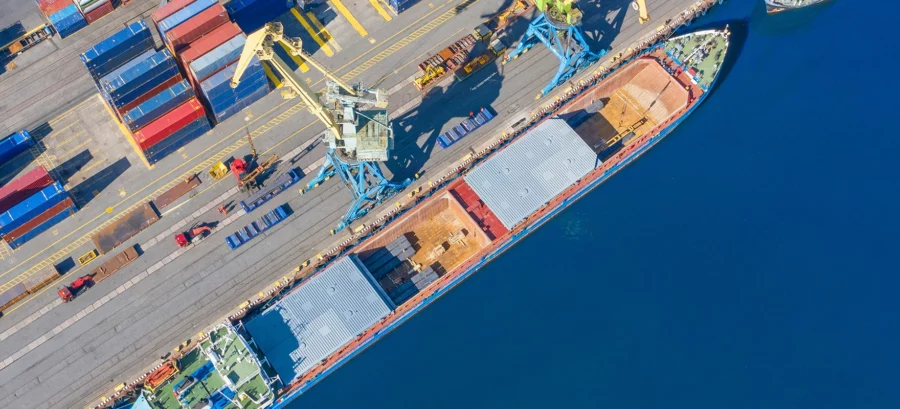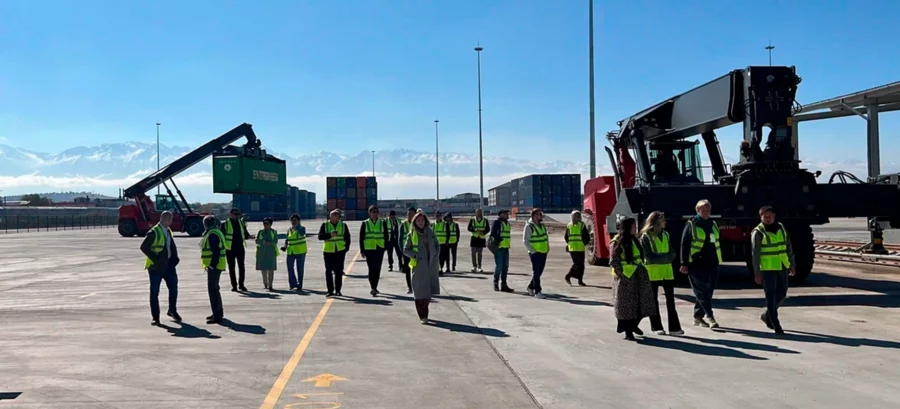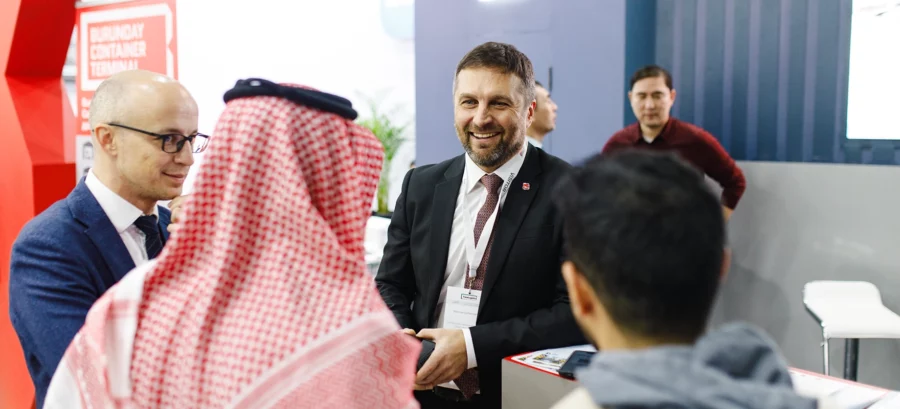Wood & timber isn’t “just another breakbulk” —
It’s an entire commodity universe: round logs, sawn timber, plywood/OSB/MDF panels, utility poles, pulp, paper, wood chips, and biomass pellets — all flowing through breakbulk, bulk, and containerized modes.
Each type comes with distinct handling profiles for safety, moisture, and compliance — and is sensitive to construction cycles, energy markets, weather, and trade regulation.
Below: a brief look at the market mechanics shaping the quay — and a real-world playbook for solving timber’s top challenges at scale using Solvo.TOS.
Market Snapshot (2022–2025): What’s Moving — and What It Means for Terminals
What’s in the basket:
- Breakbulk: round logs (by species, diameter, length), bundled sawn timber, utility poles, wrapped panels.
- Bulk: wood chips and pellets — requiring special attention to moisture, dust, and fire safety.
- Containers: higher-value goods like panels, paper reels, and specialty timber.
Here are 5 trends reshaping timber operations at the quay.
1. EU supply reshuffle & EUDR compliance.
Signal: Europe’s pivot from sanctioned sources plus the EU Deforestation Regulation (geolocation due-diligence) is re-routing trade and compressing documentation windows.
Implication for ports: tighter document control & traceability (lots, origin, geolocation) and more frequent compliance holds at gate/yard.
2. North America → EU & MENA substitution.
Signal: North American producers have increased shipments to Europe amid supply gaps, while MENA buyer interest rises.
Implication: terminals need mode-agnostic planning (breakbulk/bulk/box) and yard zoning that can flex seasonally.
3. Energy markets & pellets/chips.
Signal: Power and heating demand keep pellets/chips in the mix for Europe and Asia; mills push variable, weather-affected output.
Implication: stockpile management (moisture, dust, hot-spot detection) and safe routing become core TOS scenarios.
4. Construction cycles & panels/pulp.
Signal: Cyclical housing starts and packaging demand swing panel and pulp volumes.
Implication: terminals need appointment scheduling to flatten peaks and quick re-plans when vessels roll.
5. Climate and phytosanitary pressure.
Signal: Outbreaks and extreme weather tighten fumigation, quarantine, and quality rules.
Implication: time-bound holds and auditable treatment windows integrated into yard plans.
Sources for the trends above: FAO 2024; UNCTAD Review of Maritime Transport 2024; Eurostat trade updates 2024; USDA Forest Products outlooks 2024–2025; ITTO market reports 2023–2025; Fastmarkets/RISI 2024–2025.
9 Challenges — and How a TOS Handles Them
1. Multi-mode complexity (breakbulk + bulk + box)
Pain: Fragmented workflows, duplicate data, brittle handovers across quay/yard/rail/gate.
TOS fix: One platform orchestrates all cargo types and transport modes, standardizing tasks, equipment assignment, and data from quay to yard to rail/truck—without “IT glue.”
2. Moisture, weathering & quality drift
Pain: Warping/mold in timber; moisture sensitivity in panels/pulp; covered storage constraints.
TOS fix: Cargo profiles (cover required, stacking, FEFO/FIFO), IoT readings (humidity/temperature), and automatic corrective tasks (re-tarp, relocate, resample).
3. Fire & dust hazards (chips/pellets)
Pain: Hot spots, off-gassing, dust-explosion risks in stockpiles and enclosed spaces.
TOS fix: Hazard flags drive safety checklists, restricted routing, sensor thresholds with alerts/escalations, and incident workflows tied into operations.
4. Traceability & compliance (EUDR, phyto, fumigation)
Pain: Proof of origin/geolocation, auditable chain of custody, treatment windows.
TOS fix: Lot/batch + geo fields, digital document packs, configurable HOLD/RELEASE states, and time-boxed fumigation integrated with berth/yard planning.
5. Yard congestion, pile geometry & seasonality
Pain: Irregular arrivals, mixed lengths/diameters, shifting densities; lost ground time.
TOS fix: Dynamic zoning and smart stacking rules by commodity/dimension; what-if re-plans; appointment/gate scheduling to smooth peaks; bulk stockpile targets.
6. Damage control & tally accuracy
Pain: Miscounts (m³/tonnes/MBF), strapping failures; weak evidence for claims.
TOS fix: Guided mobile tally (barcode/RFID where available), photo/video capture at point of work, automatic unit conversions, exception coding into KPIs.
7. Vessel stowage & draft constraints
Pain: Safe trim with heavy logs; blend/quality targets for bulk; berth productivity.
TOS fix: Integrated stowage assistance, quay-crane job sequencing, bulk blending & quality checkpoints tied to load plans.
8. Workforce availability & onboarding
Pain: Fewer experienced scalers/tally clerks; training overhead.
TOS fix: Role-based, multilingual mobile UIs with embedded SOPs, checklists, and training mode—shortening time-to-productivity without compromising safety.
9. Intermodal visibility (sea ↔ rail/inland)
Pain: Double handling and blind spots between port, inland depots, and railheads.
TOS fix: End-to-end tracking across nodes, synchronized yard/rail planning, through-bill visibility, and slotting to prevent unnecessary moves.
From Pilot to Production: What a Mature TOS Really Enables
Digital isn’t about “going paperless.” It’s about building a resilient core that carries real operational weight. Here’s what a mature TOS like Solvo.TOS brings to wood & timber terminals:
- Unified architecture: One digital backbone across breakbulk, bulk, and container cargo — planning, ops, KPIs aligned.
- Commodity-aware logic: Auto-tasking based on stacking rules, cover/moisture/quality needs, and compliance gates.
- Built-in compliance: Origin/geolocation fields, digital docs, batch-level traceability, and auditable workflows — no spreadsheets needed.
- IoT + safety: Sensor inputs (humidity, hot spots) linked directly to alerts, routing, and operational flows.
- Stockpile & geometry intelligence: Space-aware yard plans, bulk targets, and re-plan logic that absorbs disruption.
- Mobile-first execution: Guided tally, barcode/RFID (where applicable), photo/video capture — all tied to operational records.
- Intermodal visibility: Rail/truck/sea planning with inland integration — fewer touches, faster turnarounds.
- Open APIs & ecosystem: Quick integration with gate hardware, weighing systems, and partner platforms.
The Solvo.TOS Approach
From day one, Solvo.TOS was built as a multi-cargo platform, not a patchwork of modules. That means no bolted-on systems for timber, no silos between breakbulk, bulk, and box.
For wood & timber operations, Solvo.TOS offers:
- EUDR-ready geodata fields, document packs, and compliance logic
- Moisture/hazard tracking for chips/pellets, without disrupting productivity
- Dimension-based yard zoning and safe stacking for timber/panels
- Integrated quay + stowage logic for logs and bulk blends
- Full visibility across inland chains, with scheduling and KPIs in one place
Complex flows don’t need complex systems
Wood & timber logistics are volatile, seasonal, and regulation-heavy — but entirely manageable with the right digital foundation.
If you’re bracing for EUDR, shifting your flows, or onboarding new cargo types, Solvo.TOS is the platform to help you adapt — safely, scalably, and without fragile custom code.






